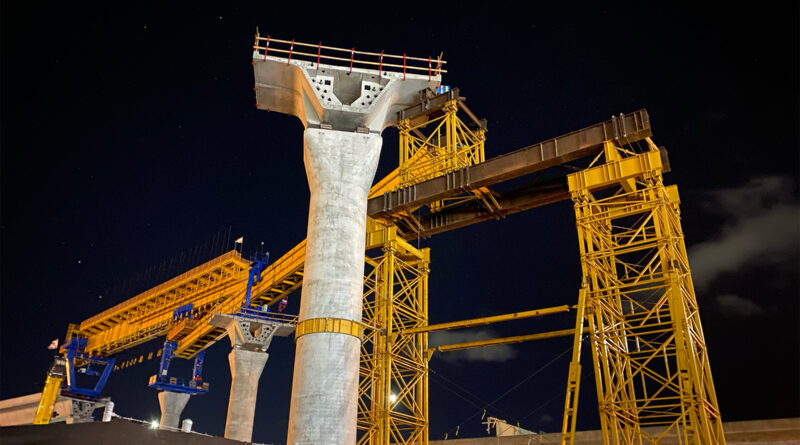Honolulu Turns to AI to Tackle Permitting Backlog and Delays
The Honolulu Department of Planning and Permitting (DPP) announced Wednesday that it is implementing new technology initiatives, including artificial intelligence, to address the city’s massive backlog of building permits and reduce wait times that can stretch over a year.
At a press conference at Honolulu Hale, DPP Director Dawn Takeuchi Apuna unveiled plans to replace the department’s outdated permitting software, which dates back to 1998, with a modern, cloud-based system called Clariti. The new system, part of a $5.6 million project funded by federal pandemic relief money, is expected to streamline permit processing, inspections, and enforcement.
SEE ALSO: Honolulu Partners with Clariti to Modernize Planning and Permitting
“The solution is a robust, flexible, and user-friendly permitting system, designed to streamline and expedite permit processing and inspections and enforcement,” Apuna said, per the Honolulu Star-Advertiser. “With modern web-based customer portals, integrated land management tools, robust mobile applications, intuitive reporting, and workflow features, the new solution will enable the DPP to enhance operational efficiency and service delivery.”
The transition to Clariti began in February and is expected to take 18 months, with a public rollout planned halfway through the process, according to a Civil Beat report. Once fully implemented, the system will allow users to apply and pay for permits online, a significant upgrade from the current practice of hand-delivering checks to the department.
In addition to Clariti, DPP is also upgrading its ProjectDox system, which will enable users to view, zoom, pan, rotate, measure, annotate and redact documents and images. The $206,000 upgrade, also funded by federal relief money, will move the system to the cloud for faster processing and provide new features to help applicants track the status of their permits.
“Users will see auto calculated time so DPP or applicant can clearly identify who is holding it up and who’s not,” Apuna said, per Hawaii News Now. “Users will have the ability to download comments and markups into an Excel sheet that can be shared with the design professionals prior to the end of review cycle.”

Perhaps the most innovative aspect of DPP’s technology overhaul is the use of artificial intelligence for building plan reviews. Through a partnership with CivCheck, an AI-based software company, DPP is piloting a system that can check residential building plans for code compliance, freeing up staff to focus on more complex projects.
“The result is a more rapid, accurate, and predictable permitting experience,” said Apuna. “This is a game changer for permit review.”
The AI system is currently being used as part of a five-month pilot project at no cost to the city. If successful, it could help DPP fulfill Mayor Rick Blangiardi’s promise to reduce the average review time for residential permits to two to four weeks and for commercial permits to six months or less.
As of January, residential projects were waiting an average of more than six months for permits, while commercial projects were waiting more than a year.
“Every day of delays costs an enormous amount of money,” said Eric Crispin, vice president of Ohana Real Estate Investors told HNN.
But while the technology upgrades are a step in the right direction, some stakeholders remain cautiously optimistic. Jennifer Jackson, owner of Jen Lee Design, said that while DPP has made significant improvements, staffing shortages remain a challenge.
“I think they need to hire more people, which it sounds like they’re doing,” Jackson told the Star-Advertiser.

Apuna acknowledged the department’s struggle to fill engineer positions, noting that DPP had nearly 70 new hires in the past year but was still hovering around a 25% vacancy rate. She said the city was working with unions to raise pay for some positions and recruiting from the University of Hawaii’s engineering programs.
Despite the challenges, Mayor Blangiardi expressed confidence in Apuna and the department’s ability to turn things around.
“This is akin to trying to change a tire (while) going 60 miles per hour down the freeway,” he said. “We all wish it was a lot better today than it is. So we’re not where we want to be, but we will get there.”
As Honolulu grapples with a housing shortage and a growing population, the success of DPP’s technology initiatives could have far-reaching implications for the city’s future. With the promise of faster, more efficient permitting, developers may be more inclined to take on projects, helping to alleviate the housing crunch and stimulate economic growth.
But for now, stakeholders remain cautiously optimistic, waiting to see if the department can deliver on its promises.
“It sounds very encouraging,” said Crispin. “I think what Dawn and her DPP staff are proposing is leveraging technology to eliminate a lot of the doubt and a lot of the questions that are typical in the permitting process.”

